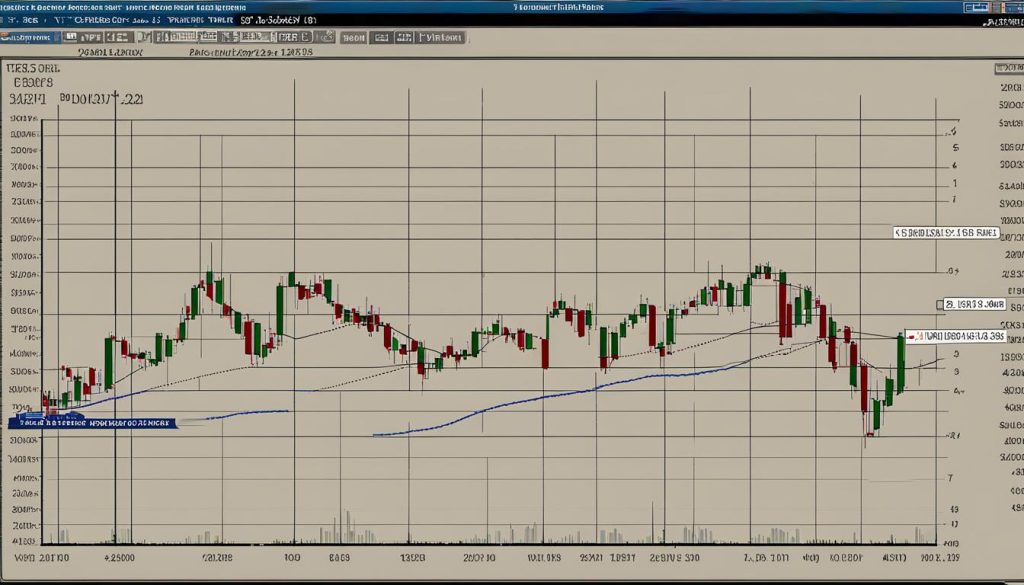If you've been seeking an indicator that provides a comprehensive view of market trends, you've hit the jackpot! The KDJ Indicator is an all-in-one technical analysis tool used by traders to identify potential buy and sell signals. The KDJ Indicator is known for its unique three-line setup, each with a specific function that combines the lines. Like the seasonal data, the kdj indicator can give traders a complete picture of market behavior.
How Does the KDJ Indicator Work?
The KDJ Indicator is made up of three lines: the %K line, the %D line, and the all-important %J line. Each line holds an essential place in the indicator setup:
- The %K line, or fast line, is a sensitive measure of the market's momentum.
- The %D line, also known as the slow line, is a moving average of the %K line.
- The %J line, or the J line, represents the divergence of the %K line from the %D line.
These three lines work in concert, helping traders decipher the market's trend and volatility. They operate on a scale of 0 to 100, with values above 80 often indicating overbought conditions and values below 20 suggesting oversold conditions.
Calculating the KDJ Indicator
The KDJ indicator formula is at the heart of understanding how this tool functions. The calculations for each line are as follows:
- %K = [(Close – Low(N)) / (High(N) – Low(N))] x 100
- %D = Moving Average of %K
- %J = (3%K) – (2%D)
Where:
- Close is the closing price
- Low(N) is the lowest low over N periods
- High(N) is the highest high over N periods
Implementing the KDJ Indicator in Your Trading
The KDJ trading strategy primarily involves observing the crossovers between the %K line and the %D line. A buy signal is generally generated when the %K line crosses above the %D line, and a sell signal is given when the %K line crosses below the %D line. However, the introduction of the %J line adds another layer to this. The %J line is used to confirm these signals, adding a level of security to this trading strategy.
Here is a step-by-step guide to trading with the KDJ Indicator:
- Set up the KDJ Indicator on your trading platform. Ensure you can clearly distinguish between the %K, %D, and %J lines.
- Watch for the %K line to cross the %D line. This could be a potential signal.
- Confirm this signal with the %J line. If the %J line supports the crossover, proceed with the trade.
- Always remember to set a stop loss to limit potential losses and consider the overall market trends and news.
- Always monitor your trade and adjust your strategy as the market moves.

Adjusting KDJ Indicator Settings
KDJ indicator settings can be tailored to individual trading strategies. While the standard setting for the KDJ Indicator is (9,3,3), these can be adjusted according to market conditions. A longer period will provide fewer signals, but they might be more reliable. A shorter period will offer more signals with the risk of increased false signals.
KDJ Indicator vs Other Indicators
The KDJ Indicator stands out due to its three-line system. Unlike similar oscillators like the stochastic oscillator, which only has two lines, the KDJ Indicator incorporates the %J line. This additional line adds another layer of signal confirmation, reducing the risk of false signals.
The Limitations of the KDJ Indicator
Like all trading tools, the KDJ Indicator isn't without its limitations. One drawback is that the %K and %D lines can become very sensitive in volatile markets, leading to potential false signals. Hence, it's recommended to use the KDJ Indicator in conjunction with other technical analysis tools and wyckoff market schematics.
Conclusion
The KDJ Indicator is a valuable tool in a trader's arsenal, providing a three-pronged approach to market analysis. With its tri-line setup and adaptable settings, it offers a dynamic way to generate potential buy and sell signals. Remember, though, to always consider its limitations and incorporate other tools and analysis to make well-informed trading decisions.
Frequently Asked Questions
The KDJ Indicator offers valuable insights into price momentum and potential reversal points. It’s particularly useful in volatile markets due to its sensitivity to price movements.
The KDJ Indicator adds an additional ‘J’ line to the traditional Stochastic Oscillator, offering traders a more comprehensive view of market conditions.
The standard setting for the KDJ Indicator is (9, 3, 3), but traders can modify these parameters to align with their trading strategy and the specific asset they’re trading.
While powerful, the KDJ Indicator should be used alongside other technical indicators to improve the robustness and accuracy of your trading strategy.





